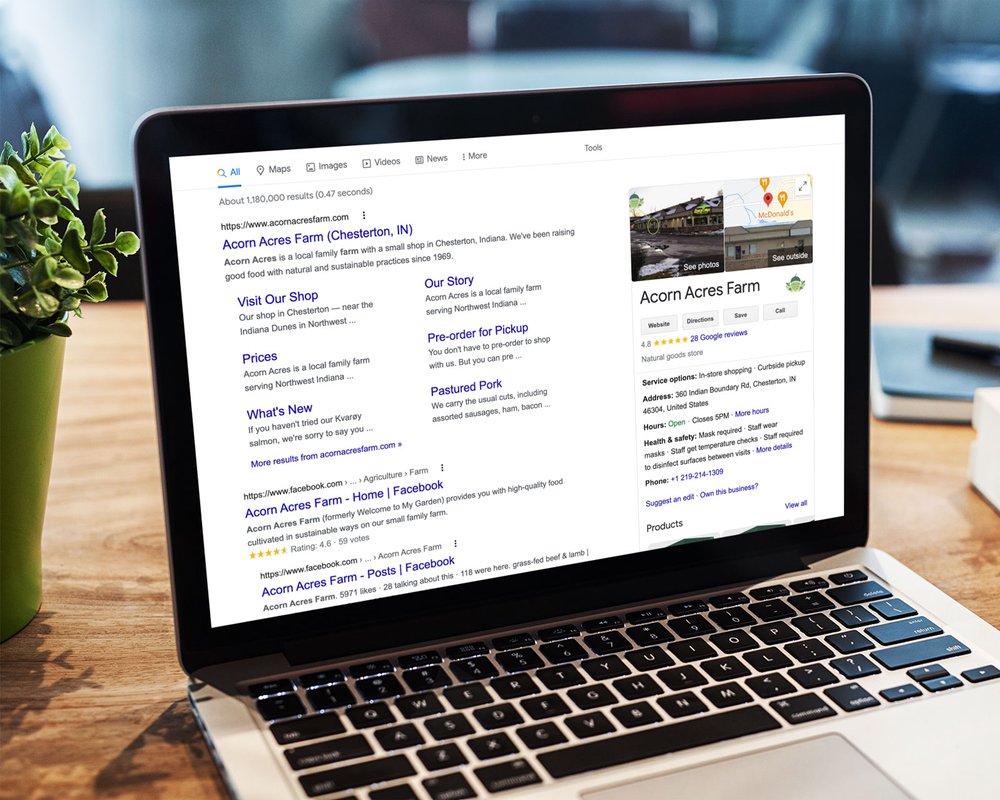
In the ever-evolving landscape of digital marketing, staying ahead requires a commitment to innovation and a keen understanding of the latest strategies. Advanced Content Marketinghas emerged as a pivotal force in the realm of online engagement, offering marketers a toolbox filled with dynamic techniques to captivate audiences.
From personalized interactions and immersive experiences to the strategic use of visuals and SEOoptimization, the advanced contentmarketer navigates a multifaceted landscape. In this exploration, we delve into the intricacies of Advanced Content Marketing, uncovering how these strategies, when expertly applied, can propel brands to new heights of online success.
What Is Advanced Marketing Content?
Advanced Marketing Content refers to a sophisticated and strategic approach to creating and disseminating promotional material. Unlike traditional marketing content, which often focuses on basic messaging and information delivery, advanced marketing content employs cutting-edge techniques and technologies to engage, captivate, and convert target audiences more effectively. Key elements of advanced marketing content may include:
- Personalization -Tailoring content to specific audience segments or even individual preferences, providing a more personalized and relevant experience.
- Interactivity -Incorporating interactive elements such as quizzes, polls, and multimedia to enhance user engagement and participation.
- Visual Storytelling -Leveraging compelling visuals, graphics, and videos to convey a brand's message in a more captivating and memorable manner.
- SEOOptimization -Structuring content with search engine optimizationbest practices to improve visibility and ranking on search engineresults pages.
- Cross-Platform Consistency -Ensuring a consistent and seamless presentation of content across various digital platforms, from websites and social mediato email newsletters.
- Data-Driven Insights -Using analytics and data-driven insights to understand audience behavior, preferences, and trends, allowing for more informed content strategies.
- Technological Integration -Incorporating emerging technologies such as AI, augmented reality, or virtual reality to enhance the overall user experience.
Advanced Content Vs. Basic Content
In the dynamic landscape of digital marketing, the distinction between advanced content and basic content is crucial for businesses aiming to stand out and engage effectively with their audiences.
Basic Content
Basic content serves as the foundational layer of a digital marketing strategy. It typically focuses on delivering straightforward information and introducing audiences to products, services, or general industry topics. This content often takes the form of blog posts, articles, or standard web pages, and its primary goal is to provide essential information in a clear and concise manner. While basic content is important for establishing an online presence, it may lack the interactive and personalized elements that are increasingly valued in today's competitive digital environment.
Advanced Content
On the other hand, advanced content represents a strategic evolution beyond the fundamentals. It incorporates sophisticated techniques to create more immersive and personalized experiences for the audience. This type of content goes beyond mere information delivery, leveraging strategies such as personalization, interactivity, and visual storytelling. Advanced content recognizes the uniqueness of individual users, tailoring experiences based on their preferences, behaviors, and demographics. It may include interactive elements like quizzes, surveys, and dynamic visuals, providing a more engaging and memorable encounter for the audience.
Personalized Content Experiences
Personalized content experiences represent a paradigm shift in content marketing, moving beyond generic messaging to create tailored and meaningful interactions with individual users. This approach recognizes the diverse needs, preferences, and behaviors of audiences, aiming to deliver content that resonates on a personal level. Here's an exploration of the key elements and benefits of personalized content experiences:
Key Elements Of Personalized Content Experiences
- User Data Utilization -Leveraging user data, including browsing history, preferences, and demographics, to customize content delivery. This enables marketers to create a more accurate and nuanced understanding of their audience.
- Dynamic Content -Implementing dynamic content elements that change based on user interactions or specific triggers. For instance, recommending related articles, products, or services based on previous user behavior.
- Personalized Messaging -Crafting content with personalized messaging, addressing users by name, and tailoring the language to resonate with their interests or pain points.
- Behavioral Targeting -Utilizing behavioral targeting to predict user preferences and serve content that aligns with their likely interests. This involves tracking user actions and adjusting content recommendations accordingly.
- Segmentation Strategies -Categorizing audiences into segments based on shared characteristics and delivering content that speaks directly to each segment's unique needs.
Benefits Of Personalized Content Experiences
- Increased Engagement -Personalization fosters a deeper connection with users by offering content that aligns with their interests, resulting in increased engagement and time spent interacting with the brand.
- Improved Conversion Rates -By presenting users with content that is highly relevant to their needs and preferences, personalized experiences can lead to higher conversion rates, whether the desired action is a purchase, sign-up, or other forms of engagement.
- Enhanced Customer Loyalty -Personalization demonstrates a brand's commitment to understanding and meeting the individual needs of its audience. This, in turn, fosters a sense of loyalty and trust among users.
- Optimized User Experience -Tailoring content to individual preferences contributes to an overall positive user experience. Visitors are more likely to find the information they seek quickly, leading to a more satisfying interaction with the brand.
- Data-Driven Decision Making-Personalized content experiences rely on data analysis and insights. This data-driven approach allows marketers to make informed decisions, refine strategies, and continually improve the relevance of their content.
Interactive Content
Interactive content is a dynamic and engaging form of digital material that encourages active participation from its audience. Unlike traditional static content, interactive content invites users to interact, provide input, and immerse themselves in two-way communication with the material. This approach has gained prominence in the digital marketing landscape due to its ability to capture attention, increase user engagement, and deliver a more memorable and impactful user experience. Let's explore the key aspects and benefits of interactive content:
Key Elements Of Interactive Content
- Quizzes and Surveys -Incorporating quizzes and surveys into content to gather user opinions, preferences, or feedback. This not only engages users but also provides valuable insights for marketers.
- Polls and Voting -Encouraging audience participation by including polls and voting mechanisms. This fosters a sense of involvement and community among users.
- Calculators and Assessments -Providing interactive tools such as calculators or self-assessment quizzes that offer personalized results based on user input. This adds value by delivering customized information.
- Interactive Infographics -Enhancing traditional infographics by adding clickable elements, animations, or interactive features. This approach transforms static information into a more engaging and educational experience.
- 360-Degree Videos and Virtual Tours -Offering immersive experiences through 360-degree videos or virtual tours. This is particularly effective for industries like real estate, tourism, or product showcases.
- Interactive Webinars and Live Q&A Sessions -Facilitating real-time interaction through webinars, live Q&A sessions, or chat features. This provides a direct line of communication between content creators and their audience.
Benefits Of Interactive Content
- Increased Engagement -Interactive content captures and retains user attention more effectively than static content, leading to increased engagement levels.
- Data Collection -Interactive elements allow marketers to collect valuable user data, preferences, and feedback, contributing to a better understanding of the target audience.
- Personalization Opportunities -By tailoring content based on user interactions, brands can provide personalized experiences that resonate with individual preferences.
- Improved Learning and Retention -Interactive content, such as simulations or educational games, can enhance the learning experience by promoting active participation and better information retention.
- Enhanced Brand Perception -Brands that employ interactive content demonstrate a commitment to innovation and user-centric experiences, positively impacting their overall brand perception.
- Social Sharing -Interactive content often prompts users to share their experiences on social media, increasing the reach and visibility of the material.
- Lead Generation -Engaged users are more likely to convert into leads. Interactive content can be a powerful tool for lead generation, especially when combined with strategic calls to action.
Visual Storytelling
Visual storytelling is a compelling and strategic approach to conveying information, ideas, or narratives through a combination of visuals, graphics, and other multimedia elements. It transcends traditional text-based communication by leveraging the power of images, videos, and design to create a more immersive and emotionally resonant experience for the audience. Here's an exploration of the key components and benefits of visual storytelling:
Key Components Of Visual Storytelling
- Imagery and Graphics -Incorporating high-quality images, illustrations, and graphics that complement and enhance the narrative. Visual elements serve to evoke emotions and provide context to the story.
- Videos and Animations -Utilizing videos or animated content to bring narratives to life. This dynamic approach captivates the audience and facilitates a more engaging storytelling experience.
- Infographics -Presenting complex information or data in a visually digestible format through infographics. This enhances understanding and retention while maintaining audience interest.
- Brand Consistency -Ensuring a consistent visual identity throughout the storytelling process. Consistency in design, color schemes, and brandingelements reinforces brand recognition and strengthens the overall narrative.
- Typography -Using typography strategically to convey tone, emphasis, and pacing. Font choices, sizes, and styles contribute to the visual appeal and readability of the storytelling content.
- Interactive Elements -Introducing interactive elements such as clickable graphics or scroll-triggered animations to encourage audience engagement and participation.
Benefits Of Visual Storytelling
- Increased Engagement -Visual storytelling captures attention more effectively than text-only content, leading to higher engagement levels. Visuals evoke emotions and make the narrative more memorable.
- Enhanced Comprehension -Complex information becomes more accessible and understandable when presented visually. Visual storytelling facilitates better comprehension, especially for diverse audiences.
- Emotional Connection -Visuals have the power to evoke emotions and create a deeper connection with the audience. A well-crafted visual story can resonate on a personal level, fostering a stronger bond between the brand and its audience.
- Improved Retention -Humans are inherently wired to remember visuals better than text. Visual storytelling enhances information retention, ensuring that the audience retains key messages for a more extended period.
- Social Media Impact -Visual content is highly shareable on social media platforms. Compelling visuals make stories more shareable, increasing the potential for virality and expanding the reach of the narrative.
- Differentiation -In a crowded digital landscape, visual storytelling sets brands apart by offering a unique and memorable way to communicate. It helps establish a distinctive brand identity.
- Adaptability Across Platforms -Visual storytelling is versatile and adaptable across various digital platforms, including websites, social media, presentations, and more. This ensures a consistent and cohesive brand narrative.
SEO-Optimized Content
SEO-optimized content is a strategic approach to content creationthat aims to enhance a webpage's visibility and ranking on search engine results pages (SERPs). This involves the careful integration of relevant keywords, high-quality writing, and technical considerations to align with search engine algorithms. The goal is to not only attract more organic traffic but also to provide valuable and relevant content that meets the needs of the audience. Here's a closer look at the key elements and benefits of SEO-optimized content:
Key Elements Of SEO-Optimized Content
- Keyword Research -Identifying and targeting relevant keywords that align with the content's theme and user search intent. This involves using tools to discover high-traffic keywords with manageable competition.
- Strategic Keyword Placement -Integrating targeted keywords naturally within the content, including in titles, headings, meta descriptions, and throughout the body. This helps search engines understand the context of the content.
- Quality Content -Creating high-quality, informative, and engaging content that addresses the needs and queries of the target audience. Search engines prioritize content that provides value to users.
- Meta Tags Optimization -Crafting compelling meta titles and meta descriptionsthat not only include relevant keywords but also entice users to click through to the content.
- Mobile Optimization -Ensuring that the content is optimized for mobile devices, as search engines increasingly prioritize mobile-friendly websites in their rankings.
- Internal and External Linking -Incorporating internal links to relevant pages within your website and external linksto reputable sources. This enhances the content's credibility and provides a better user experience.
- User Experience and Page Speed -Optimizing the website's overall user experience, including fast loading times and easy navigation. Page speed is a crucial factor in search engine rankings.
- Social Media Integration -Sharing content on social media platforms and encouraging social signals, such as likes and shares. While not a direct ranking factor, social signals can indirectly influence search engine rankings.
Benefits Of SEO-Optimized Content
- Improved Visibility -SEO-optimized content is more likely to appear prominently in search engine results, increasing its visibility to users actively searching for related information.
- Higher Ranking - By adhering to SEO best practices, content has a better chance of ranking higher on SERPs, leading to increased organic traffic.
- Targeted Traffic -SEO ensures that your content is presented to users specifically interested in the topics you cover, resulting in more targeted and relevant traffic.
- Credibility and Trust -Websites that consistently produce high-quality, SEO-optimized content are viewed as authoritative by search engines, enhancing their credibility and trustworthiness.
- Long-Term Value -Well-optimized content can continue to attract organic traffic over time, providing long-term value and return on investment.
- Analytics and Insights -SEO tools provide valuable analytics and insights into user behavior, search trends, and content performance, enabling data-driven decision-making.
- Competitive Advantage -Outperforming competitors in search engine rankings can give your brand a competitive edge, especially in industries with high online competition.
Ensure Proper Keyword Optimization
Ensuring proper keyword optimization is essential for improving your content's search engine visibility and attracting the right audience. Here's a step-by-step guide to help you effectively optimize your content with keywords:
Conduct Thorough Keyword Research
Start by conducting comprehensive keyword research to identify terms and phrases relevant to your content and industry. Utilize keyword research tools such as Google Keyword Planner, SEMrush, or Ahrefs to discover high-traffic and low-competition keywords.
Understand User Intent
Consider the intent behind each keyword. Are users searching for information, and products, or looking to take specific actions? Align your content with user intentto provide valuable and relevant information.
Focus On Long-Tail Keywords
Incorporate long-tail keywords, which are more specific and targeted. Long-tail keywords often have less competition and can attract a more qualified audience interested in niche topics related to your content.
Optimize Title Tags
Include your primary keyword in the title tag of your content. The title tag is a crucial on-page SEO element that search engines consider when ranking content. Keep the title concise, compelling, and relevant to the content.
Craft Compelling Meta Descriptions
Write engaging meta descriptions that incorporate your target keyword. While meta descriptions may not directly impact search rankings, they play a significant role in attracting clicks from search engine results pages (SERPs).
Integrate Keywords Naturally In Content
Incorporate your target keywords naturally throughout your content. Avoid keyword stuffing, as it can negatively impact readability and user experience. Aim for a balanced use of keywords that fit seamlessly into the narrative.
Header Tags Optimization
Use header tags (H1, H2, H3, etc.) to structure your content and signal the hierarchyof information to search engines. Include relevant keywords in header tags to provide context and improve SEO.
Optimize URL Structure
Create SEO-friendly URLs that include your target keywords. Keep URLs short, descriptive, and easy to read. Avoid using generic strings of numbers or symbols in your URLs.
Image Optimization
Optimize images by using descriptive file names and alt text that includes your target keywords. This not only improves accessibility but also provides additional context to search engines.
Internal And External Linking
Incorporate internal links to relevant pages within your website and external links to authoritative sources. This helps search engines understand the context of your content and contributes to a well-structured website.
Mobile Optimization
Ensure that your content is optimized for mobile devices. Google considers mobile-friendliness as a ranking factor, so a responsive design that provides a positive mobile experience is crucial.
Regularly Update And Refresh Content
Periodically review and update your content to ensure its relevance and accuracy. This not only benefits users but also signals to search engines that your content is current and valuable.
Utilize LSI Keywords
Incorporate Latent Semantic Indexing(LSI) keywords - words and phrases related to your main keywords. LSI keywords provide additional context and help search engines understand the topic comprehensively.
Monitor And Adjust
Regularly monitor the performance of your content using analytics tools. Pay attention to keyword performance and adjust your strategy based on user behavior and changes in search algorithms.
Cross-Platform Publishing
Cross-platform publishing is a strategic approach that involves creating and distributing content across multiple digital platforms, ensuring a consistent and cohesive brand presence. This method recognizes the diverse ways audiences consume information, allowing content to reach a broader spectrum of users on various devices and platforms. Here's an exploration of the key elements and benefits of cross-platform publishing:
Key Elements Of Cross-Platform Publishing
- Adaptability -Ensuring that content is adaptable and optimized for various platforms, including websites, social media, mobile applications, email newsletters, and more.
- Responsive Design -Implementing responsive design principles to ensure that content displays and functions well across a range of devices, including desktops, tablets, and smartphones.
- Consistent Branding-Maintaining a consistent visual identity, messaging, and branding elements across all platforms. This reinforces brand recognition and fosters a cohesive user experience.
- Platform-Specific Customization -Tailoring content for specific platforms based on user behavior, preferences, and the nature of each platform. This may include adjusting content length, format, and tone.
- Multi-Channel Distribution -Utilizing a variety of channels for content distribution, such as social media, email, blogs, and third-party platforms. This expands the reach of content to diverse audiences.
- Optimized Content Formats -Adapting content formats to suit each platform's requirements. For example, creating visually appealing images for Instagram, concise text for Twitter, and longer-form content for a blog.
- Integration of Multimedia -Incorporating multimedia elements such as videos, infographics, and interactive content that align with the preferences of users on different platforms.
Benefits Of Cross-Platform Publishing
- Wider Audience Reach -Cross-platform publishing allows content to reach a broader audience by meeting users where they are, whether it's on social media, search engines, or other online platforms.
- Increased Engagement - Tailoring content to suit the characteristics of each platform enhances engagement, as users are more likely to interact with content that aligns with their platform-specific expectations.
- Improved SEO -Utilizing diverse platforms contributes to a more robust online presence, positively impacting search engine optimization. Search engines often favor websites with a consistent and varied presence across the web.
- Enhanced User Experience -Providing a seamless and user-friendly experience regardless of the platform enhances user satisfaction and encourages continued engagement with the brand.
- Efficient Content Repurposing -Repurposing content across platforms allows for the efficient use of resources. A single piece of content can be adapted to suit different formats and platforms, maximizing its utility.
- Brand Consistency -Maintaining a consistent brand image and message across various platforms builds trust and reinforces brand identity in the minds of the audience.
- Data Collection and Analytics -Utilizing analytics tools to gather data on user behavior across platforms. This data-driven approach enables marketers to refine their strategies and tailor content based on audience insights.
Invest In Content Marketing Tools
Investing in content marketing tools is a strategic move for businesses aiming to enhance their content creation, distribution, and analysis processes. These tools can streamline workflows, improve efficiency, and provide valuable insights to optimize content strategies. Here's a guide to key areas where investing in content marketing tools can yield significant benefits:
Content Creation Tools
- Grammarly - Grammar and style checking for error-free content. It improves the quality and professionalism of written content.
- Canva - Graphic design tool for creating visually appealing images, infographics, and social media graphics. It enables the creation of eye-catching visuals without the need for advanced design skills.
- CoSchedule Headline Analyzer - Analyzes headlines for effectiveness and SEO optimization. It improves click-through rates by optimizing headlines for engagement.
Content Distribution And Social Media Tools:
- Buffer or Hootsuite - Social media scheduling and management. Streamlines social media posting, allowing for consistent and strategic content distribution.
- BuzzSumo - Identifies popular content and influencersin a specific industry. Assists in creating shareable content and building relationships with key influencers.
- Mailchimp or HubSpot - Email marketingautomation. Nurtures leads, fosters engagement, and delivers personalized content to email subscribers.
SEO And Analytics Tools
- Google Analytics- Web analytics for tracking website traffic and user behavior. Provides insights into content performance, user engagement, and conversion rates.
- SEMrush or Ahrefs - SEO tools for keyword research, backlink analysis, and competitor research. Improves search engine rankings and helps identify opportunities for content optimization.
- ContentCal or CoSchedule - Content calendar and collaboration tools. Streamlines content planning, collaboration, and scheduling across teams.
Content Optimization Tools
- Yoast SEO - WordPressplugin for on-page SEO optimization. Guides content creators in optimizing articles for search engines.
- Optimizely - A/B testing for website optimization. Optimizes user experience and helps identify the most effective content variations.
- Hotjar - User behavior analytics, including heatmaps and session recordings. Provides insights into how users interact with content, helping refine user experience.
Benefits Of Investing In Content Marketing Tools
- Efficiency and Productivity -Streamlines workflows and reduces manual effort in content creation, distribution, and analysis.
- Improved Quality -Enhances the quality of content through tools that provide grammar checks, design support, and SEO guidance.
- Data-Driven Decisions -Analytics tools offer valuable data insights, allowing for informed decisions and optimizations.
- Consistency -Content calendars and schedulingtools help maintain a consistent posting schedule across various channels.
- Competitive Advantage -Utilizing advanced tools can provide a competitive edge by optimizing content and staying ahead of industry trends.
- Scalability -Enables businesses to scale their content marketing efforts efficiently as they grow.
- Cost-Effective -While there is an initial investment, the long-term benefits often outweigh the costs of improving efficiency and results.
Advanced Content Marketing - FAQs
What Is The Role Of Storytelling In Content Marketing?
Storytelling in content marketing is pivotal. It helps create an emotional connection with the audience, making the content more memorable and engaging. A well-crafted story can convey complex information in a compelling and relatable way.
How Does Content Marketing Contribute To Brand Authority?
Content marketing establishes brand authority by consistently delivering valuable and insightful content. Authoritative content positions a brand as an industry leader, building trust with the audience and attracting a loyal following.
Can User-generated Content Benefit Content Marketing Strategies?
Absolutely. User-generated content, such as reviews, testimonials, and social media posts, adds authenticity to content marketing. It provides social proof, builds community, and enhances brand credibility by showcasing real experiences and perspectives.
How Does Video Content Impact Content Marketing Success?
Video content is a powerful tool in content marketing. It captivates audiences, conveys messages more effectively, and boosts engagement. Platforms like YouTube and social media have made video an integral part of successful content strategies.
Is There A Connection Between Content Marketing And SEO?
Yes, content marketing and SEO are closely linked. High-quality, relevant content improves search engine rankings. Strategic use of keywords, quality backlinks, and user engagement signals contribute to a website's visibility, making it more discoverable in search results.
Conclusion
Advanced Content Marketing represents a transformative approach in the digital realm. Going beyond basic information delivery, it employs personalization, interactivity, and visual storytelling to create immersive and tailored experiences.
Utilizing cutting-edge technologies and data-driven insights, advanced content marketing not only captures attention but positions brands as innovators in their industries. As the digital landscape evolves, this dynamic strategy remains essential for establishing meaningful connections with today's discerning and digitally savvy audiences. Through a blend of creativity and technology, advanced content marketing shapes a new era of impactful brand communication.



